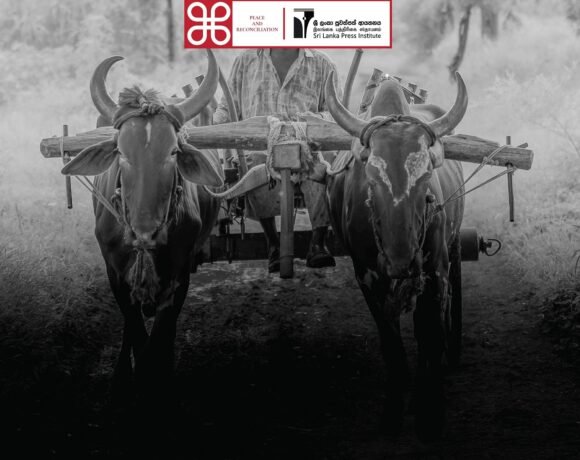Harsha Sugathadasa
Minister Bandula Gunawardena mentioned a few months ago that the Sri Lanka Railway Department had managed to reduce expenses and increase revenue over the past year. According to him, the department successfully reduced its expenses from Rs. 48 billion to 42 billion, while revenue increased from Rs. 2.6 billion to 11.6 billion. Despite the gap between the department’s income and expenses still exceeding Rs. 30 billion, the progress achieved in the past year, as highlighted by the Minister, represents a hopeful level of advancement.
The main factor contributing to the increase in revenue for the Sri Lanka Railway Department is the rise in the number of passengers traveling by train over the past year. This was revealed through information obtained from I.L.D.C. Gunasekara, the Deputy General Manager (Commercial and Marketing) of the Sri Lanka Railway Service, under the Right to Information Act. According to statistics obtained under the Right to Information Act, railway passenger revenue in 2022 was Rs. 8,486,241,020.72. This increased to Rs. 12,927,195,248.48 in 2023, representing a growth of 52.33%. Analyzing this increase in passenger revenue, it appears that a significant number of people turned to railway services due to the fuel crisis, and the threefold increase in bus and three-wheeler fares within the country since 2022.
Nirmala Damayanthi Perera, a resident of Ragama said, “Everything has gone up in price these days. Food, clothing, electricity bills, water bills, school van fees for the kids, and even medicine—everything has tripled in cost. But people’s salaries remain the same. So how are we supposed to live? That’s why we’re trying to cut costs in every possible way. We choose the train not only to commute to work but for any journey we need to make. By taking the train, we can save half of what we would spend on bus fares.”
Some believe that the majority of those traveling by train have monthly season tickets. However, according to statistics obtained under the Right to Information Act, in 2023, only 48,217,408 passengers traveled with monthly season tickets, while 60,828,059 passengers purchased regular tickets. Therefore, the percentage of passengers with season tickets in 2023 was 44.22%. Additionally, in 2022, train ticket prices were increased, but they remain lower than bus fares. Despite the rise in train fares, passengers did not switch to buses because of this price difference. This is why the number of train passengers increased in 2023 compared to 2022.
However, Pasindu Udapola, a young man from Ja-Ela, used to travel by train but now travels by bus. He shared his thoughts on this matter:
“I used to go to the University of Kelaniya by train. I chose the train because it was easier to travel from Ja-Ela to Kelaniya by train. After I started working at the Sri Lanka Standards Institution, I traveled to work by train for a few days. But now, it’s impossible to get on the train because of the crowd. Plus, I board at Ja-Ela, and by the time the train reaches Ja-Ela, it’s packed like sardines. I never get a seat. It’s not just about getting a seat; sometimes I can’t even get inside. On top of that, the train is often delayed. That’s why I now go to work by bus. I can catch a bus from Ja-Ela where I can sit comfortably. If they increased the number of train compartments and properly organized the second-class carriages, more people like me would use the train. If there was a way for passengers to travel comfortably, such as introducing intercity trains, even those who drive to work would use the train. This would also help reduce traffic on the roads. Improving the railway service is possible.” Authorities who oversee Railway development can consider Pasindu’s opinion.
Roshan Karunanayake, who lives in Yakkala, works at the Central Mail Exchange in Colombo. Although he has the option to take any express bus from Yakkala to Colombo, he chooses to commute by train.
“From Yakkala to Colombo, the bus fare is 150 rupees. But if I get on the train from Gampaha, it’s only 80 rupees. So, for a round trip, it’s 160 rupees. That’s why I ride my motorcycle to Gampaha and catch the train from there. Plus, the train is faster. If I take the bus, it takes over an hour. From Gampaha, I can reach Colombo in 45 to 50 minutes on a slow train, and in 35 minutes on an express train. Because of the lower travel cost and the faster journey, I travel from Gampaha to Colombo by train,” explained Roshan Karunanayake, clarifying his reasons for choosing the train.
However, at present, there is a notable increase in the number of people traveling by train. This is confirmed by the following departmental statistics:
Year Number of Passengers
2018 137,524,452
2019 128,476,224
2020 65,080,012
2021 35,962,456
2022 102,732,133
2023 109,045,467
When examining these statistics, we must not forget that the decrease in train passengers in 2019 was due to the Easter attacks and the lockdowns imposed during the COVID-19 pandemic in 2020 and 2021.
Among those who travel by train are not only people commuting to work and traveling but also school children. K. A. Dakshitha Tharanath, a student in the Advanced Level class at Christ King College, Tudella, said:
“I come to school from Ragama. If I take the bus, I have to spend 30 rupees to get to Mahabage and then another 60 rupees to get to Tudella. But the train fare from Ragama to Tudella is only 20 rupees. For a round trip, it costs just 40 rupees. For school children, a monthly train season ticket costs only 250 rupees. So, taking the train to school is economically beneficial for our parents. Another thing is, it takes 20 minutes by train, whereas the bus takes 40 minutes. Wasting time on the road is a real problem.”
Ragama is a train station where express trains stop, arriving from two routes. While this is an advantage for Nirmala Damayanthi and Dakshitha Tharanath, not everyone benefits from it because, on some train routes, passengers must wait a long time for a train to arrive.
On average, there are about 346 train journeys per day. According to statistics obtained under the Right to Information Act, these can be broken down into 115 on the main line, 102 on the coastal line, 30 on the Puttalam line, and 18 on the Kelani Valley line. Additionally, we should not forget that special trains are operated during specific festive periods, such as the Sinhala and Tamil New Year, the Thalawila festival, the Kandy Esala Perahera, and the Sri Pada pilgrimage season, as well as in response to public demand. Today, none of these trains run empty.
“I have been commuting to work by train for 28 years. Since I am employed in the government sector, I receive the monthly train season ticket at one-third of the cost. That’s why I chose the train for my commute. It’s about the economic advantage. Even without a season ticket, traveling by train is more economical than traveling by bus. If I were to take the bus from Kalutara to Kollupitiya, it would cost 176 rupees. By train, it costs only around 100 rupees. Moreover, the train journey is faster. It takes 1 hour and 45 minutes by bus, but only 1 hour and 10 minutes by a slow train. Traveling by train saves both money and time. Additionally, commuting by train is quite enjoyable. Every day, the same group of people travel, and we have fun trips and parties. There used to be a women’s carriage on my trains, but I never used it.” This was stated by Sujeewani Punchihewa, a technical officer at the Colombo Municipal Council, who commutes from North Kalutara.
When discussing women’s compartments in the Sri Lanka Railway service, several office trains featured compartments designated for women. These compartments could be seen on the Samudra Devi train from Galle to Colombo, the Ruhunu Kumari train from Matara to Colombo, the office train from Mahawa to Colombo, and the office train from Puttalam to Colombo. However, because women’s compartments traveled empty while women and men traveled together in the other compartments, the women’s compartments in the Puttalam and Mahawa trains were quietly discontinued.
In inquiries regarding this matter, women expressed that they felt safer traveling with men, especially when commuting early in the morning or late at night. Meanwhile, on March 8, 2019, in conjunction with International Women’s Day, the then-government reinstated women’s compartments. These compartments were allocated on trains traveling from Mirigama to Colombo, Rambukkana to Colombo, Mahawa to Colombo, Puttalam to Colombo, the Sagarika train from Beliatta, and the Samudra Devi train from Galle. Security officers were even assigned to these compartments to ensure that men were directed to other compartments. However, in the absence of security officers, men would board these women’s compartments. When women objected, men argued that if women were to have a separate compartment, they should be removed from the other compartments and placed in the designated women’s compartment. Some people argued that it was unfair to allocate a compartment solely for women without increasing the number of compartments on the train and suggested adding a new compartment if necessary.
However, with the onset of the COVID-19 pandemic in March 2020 and the subsequent political upheaval, these women’s compartments disappeared.
The loss of women’s compartments has not hindered anyone’s ability to travel by train. Especially on office trains, passengers continue to travel together harmoniously. Sinhalese passengers travel freely with Tamil passengers on the Yal Devi and Meenagaya trains, just as Tamil and Muslim passengers travel freely with Sinhalese passengers on the Ruhunu Kumari and Udarata Menike trains. Even during the thirty-year war and the Easter attacks, Sinhalese, Tamil, and Muslim passengers traveled together as usual.
“Commuting by train is easy, economical, and enjoyable. However, all that ends during strikes. You take the train to work in the morning, and when it’s time to go home, there’s a strike. I know people who travel from far places like Galle by train. Since they use season tickets, they don’t carry much money with them. So, when there’s a strike, they don’t have money for the bus. They just hang around at the station, waiting to catch any train that comes. I’ve seen people in reserved seats on long-distance trains to places like Badulla and Batticaloa facing great difficulties during strikes. Stopping these strikes that put people in such hardship would be good,” expressed Roshan Karunanayake, a resident of Yakkala Weeragula.
Despite frequent train cancellations and derailments, train commuters have not lost their preference for trains. Economic benefits, time savings, and camaraderie keep passengers riding the trains, even if they must hang on by a thread. The Railway Department, which constantly laments its losses, should work to secure the growing number of passengers and the associated revenue. They need to understand that frequent train strikes, cancellations, and derailments are major reasons why passengers might become disenchanted with train travel.









